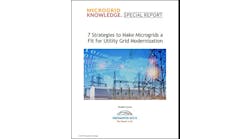Lithium-ion batteries are best positioned to meet the demand for energy storage over the next five to 10 years, but in the long run, other battery storage technologies will be needed for long-term energy storage and larger- scale applications.
That’s the word from Lux Research, which recently outlined up-and-coming battery storage technologies in a teleconference.
Right now, the need for storage is prompted by the growing use of renewable energy on the grid, said Chris Robinson, an analyst for Lux.
The amount of wind and solar on the grid has doubled, he said. Half the electricity added last year was wind or solar, driven largely by cost reductions. “Even just in the last 15 years, we have seen a big drop in the cost of solar modules. We don’t expect this trend to change,” he said.
However, the large amount of renewable energy being added to the grid is causing grid instability, Robinson said. With solar, there’s instability in the morning when there’s often too much solar coming online. And in the evening, the grid becomes unstable when the amount of solar decreases.
“Energy storage can play an important role,” he said.
The use of Lithium-ion batteries is growing quickly because prices have dropped due to increased economies of scale and larger production capacities. But Lithium-ion batteries can’t solve all problems, and are often not appropriate for large-scale and long-duration applications, he said.
For example, a large solar project in China capable of powering 2,000 homes would need massive-scale storage, in the gigawatt-hour range, a task not suitable for Lithium-ion batteries, Robinson said.
Intermittency, caused by, for example, cloud cover over solar arrays, also creates a need to store energy for longer time periods.
“We need to store energy for longer days; maybe you’re operating a wind farm and have some some cloudy days or have rain for solar. You need tens of hours to days of storage,” said Robinson.
To provide long-term energy storage, Lithium-ion is often not the best choice, according to Robinson.
“You can, and the industry does, optimize different cells for power and energy–for hybrid or full-electric vehicles. But you can’t extend this to tens of hours or even days (with Lithium-ion),” he said.
It’s expensive to try to scale Lithium-ion batteries to meet this scenario, Robinson said.
Pros and cons of long-term energy storage alternatives
Robinson described the advantages and disadvantages of a number of storage technologies that are better suited to meet large-scale, or long- duration storage needs.
Flow batteries, for example, allow for the decoupling of power and energy and can utilize different materials, including vanadium. The material costs are lower, Robinson said, and the batteries are less complex than Lithium-ion.
“Flow batteries decrease in costs as you increase in duration. You can add larger tanks and more fluid, but compared with Lithium-ion, after four hours flow batteries can be more appealing. They’re also effective in larger system sizes,” Robinson said.
Zinc-air batteries, he said, offer different advantages. They have low material costs, a high degree of flexibility, can stay at a zero state of charge with no degradation, and are most cost-effective after eight hours of storage. “But you can’t put them at very high power,” said Robinson.
Duke Energy’s proposed microgrid in the Great Smoky Mountains uses zinc-air battery technology.
One example of a zinc-air battery use is Duke Energy’s proposed microgrid that would serve a remote communications tower in the Great Smoky Mountains National Park, he said. This project combines 10 kW of solar power with a 95 kWh zinc-air battery that would serve a tower now served by a single overhead electric line.
“This would provide electricity to a telecom tower in a national park, eliminate the need for the transmission line and restore wilderness to a national park. It was the most affordable solution to providing power to the telecom station,” said Robinson.
Where compressed air storage may work
A third alternative to Lithium-ion batteries is compressed air storage, said Robinson. This is less efficient than other options, and has some geographic restrictions because it involves storing compressed air in balloons underwater. It might be an option in New York City, where it could be used in the Hudson River, noted Robinson.
Overall, he said, the energy storage market is growing quickly and people interested in investing in it should act now. “We see a lot of affordable opportunities to get involved in long-duration storage that will be required to keep the grid operating,” said Robinson.
Follow news about long-term energy storage technologies. Subscribe to the Microgrid Knowledge newsletter. It’s free.







